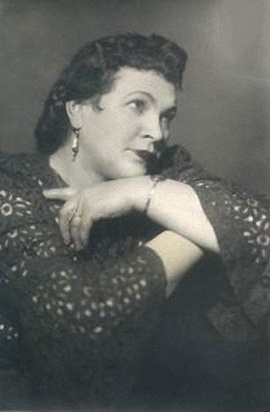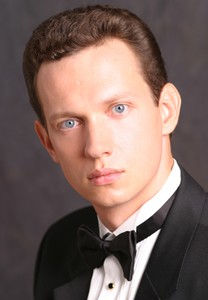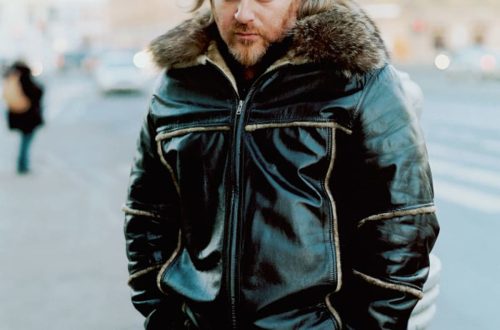
Elizaveta Ivanovna Antonova |
Elisaveta Antonova
The beautiful timbre of a clear and strong voice, the expressiveness of singing, characteristic of the Russian vocal school, earned Elizaveta Ivanovna the love and sympathy of the audience. Until now, the singer’s voice continues to excite music lovers who listen to her magical voice, preserved in the recording.
Antonova’s repertoire included a wide variety of parts of Russian classical operas – Vanya (Ivan Susanin), Ratmir (Ruslan and Lyudmila), Princess (Rusalka), Olga (Eugene Onegin), Nezhata (Sadko), Polina (“The Queen of Spades”), Konchakovna (“Prince Igor”), Lel (“The Snow Maiden”), Solokha (“Cherevichki”) and others.
In 1923, the singer, being a nineteen-year-old girl, came to Moscow with a friend from Samara, having neither acquaintances nor any specific plan of action, except for a great desire to learn singing. In Moscow, the girls were sheltered by the artist V.P. Efanov, who accidentally met them, who also turned out to be their fellow countryman. One day, walking down the street, friends saw an ad for admission to the choir of the Bolshoi Theater. They then decided to try their luck. Over four hundred singers came to the competition, many of whom had a conservatory education. Upon learning that the girls did not have any musical education, they were ridiculed and, if it were not for the insistent requests of a friend, Elizaveta Ivanovna would undoubtedly have refused the test. But her voice made such a strong impression that she was enrolled in the choir of the Bolshoi Theater, and the then choirmaster Stepanov offered to study with the singer. At the same time, Antonova takes lessons from the famous Russian singer, Professor M. Deisha-Sionitskaya. In 1930, Antonova entered the first Moscow State Musical College, where she studied for several years under the guidance of Professor K. Derzhinskaya, without stopping working in the choir of the Bolshoi Theater. Thus, the young singer gradually acquires serious skills in the field of both vocal and stage art, participating in opera productions of the Bolshoi Theater.
In 1933, after Elizaveta Ivanovna’s debut in Rusalka as the Princess, it became clear that the singer had reached professional maturity, allowing her to become a soloist. For Antonova, difficult but exciting work begins on the games assigned to her. Recalling her conversations with L. V. Sobinov and other luminaries of the Bolshoi Theater of those years, the singer wrote: “I realized that I need to be afraid of outwardly spectacular poses, get away from opera conventions, avoid annoying clichés …” The actress attaches great importance to working on stage images . She taught herself to study not only her part, but also the opera as a whole and even its literary source.
According to Elizaveta Ivanovna, reading Pushkin’s immortal poem “Ruslan and Lyudmila” helped her to better create the image of Ratmir in Glinka’s opera, and turning to Gogol’s text gave a lot to understand the role of Solokha in Tchaikovsky’s “Cherevichki”. “While working on this part,” Antonova wrote, “I tried to stay as close as possible to the image of Solokha created by N.V. Gogol, and re-read many times the lines from his “The Night Before Christmas” …” The singer, as it were, saw in front of her a smart and a mischievous Ukrainian woman, so charming and feminine, despite the fact that “she was neither good nor bad-looking … However, she knew how to charm the most sedate Cossacks …” The stage drawing of the role also suggested the main features of the performance of the vocal part. Elizaveta Ivanovna’s voice acquired a completely different color when she sang the part of Vanya in Ivan Susanin. Antonova’s voice was often heard on the radio, in concerts. Her extensive chamber repertoire included mainly works by Russian classics.
Discography of E. I. Antonova:
- Olga’s part – “Eugene Onegin”, the second complete version of the opera, recorded in 1937 with the participation of P. Nortsov, I. Kozlovsky, E. Kruglikova, M. Mikhailov, choir and orchestra of the Bolshoi Theater
- Part of Milovzor – “The Queen of Spades”, the first complete recording of the opera in 1937 with the participation of N. Khanaev, K. Derzhinskaya, N. Obukhova, P. Selivanov, A. Baturin, N. Spiller and others, choir and orchestra of the Bolshoi Theater, conductor S A. Samosud. (Currently, this recording has been released on CD by a number of foreign companies.)
- Part of Ratmir – “Ruslan and Lyudmila”, the first complete recording of the opera in 1938 with the participation of M. Reizen, V. Barsova, M. Mikhailov, N. Khanaev, V. Lubentsov, L. Slivinskaya and others, choir and orchestra of the Bolshoi Theater, conductor S. A. Samosud. (In the mid-1980s, Melodiya released a record on phonograph records.)
- The part of Vanya is Ivan Susanin, the first complete recording of the opera in 1947 with the participation of M. Mikhailov, N. Shpiller, G. Nelepp and others, the choir and orchestra of the Bolshoi Theater, conductor A. Sh. Melik-Pashaev. (Currently, the recording has been released on CD by a number of foreign and domestic firms.)
- Solokha’s part – “Cherevichki”, the first full recording of 1948 with the participation of G. Nelepp, E. Kruglikova, M. Mikhailov, Al. Ivanova and others, choir and orchestra of the Bolshoi Theater, conductor A. Sh. Melik-Pashaev. (Currently released overseas on CD.)
- Part of Nezhata – “Sadko”, the third complete recording of the 1952 opera with the participation of G. Nelepp, E. Shumskaya, V. Davydova, M. Reizen, I. Kozlovsky, P. Lisitsian and others, choir and orchestra of the Bolshoi Theater, conductor – N S. Golovanov. (Currently released on CD by a number of foreign and domestic firms.)





